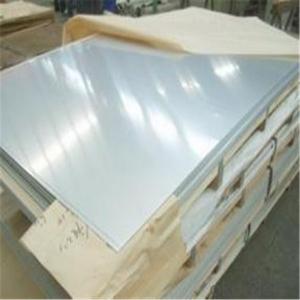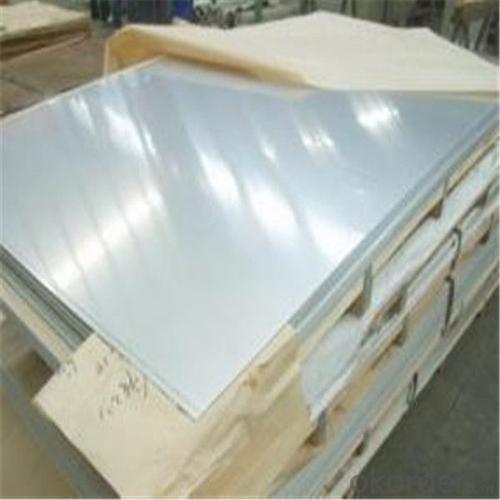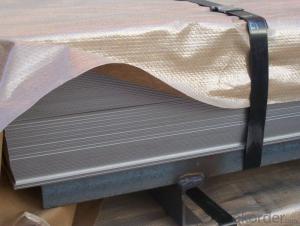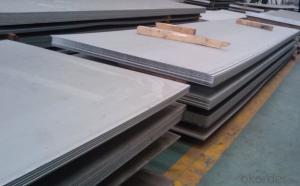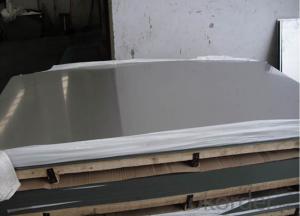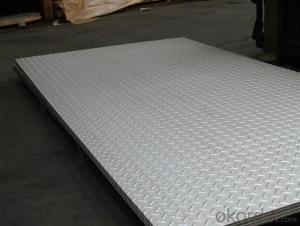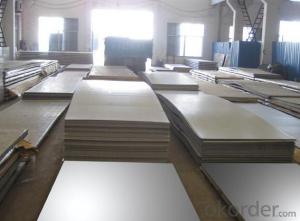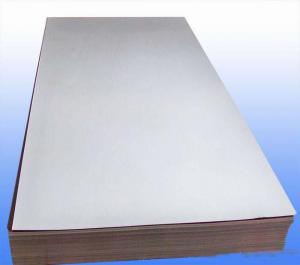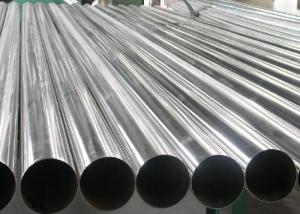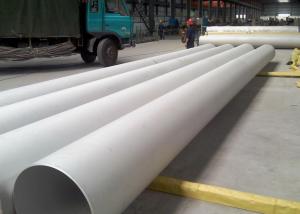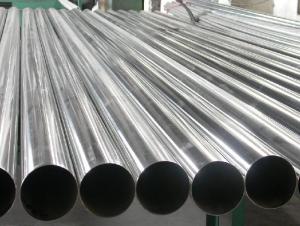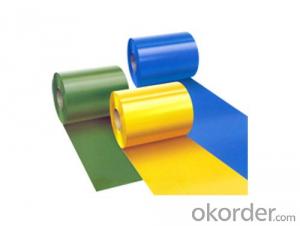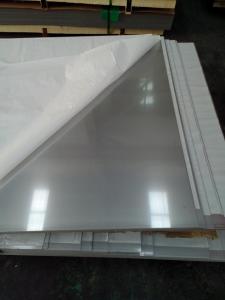Stainless Steel Sheets 304 316 304l 316l 310 321
- Loading Port:
- Shanghai
- Payment Terms:
- TT OR LC
- Min Order Qty:
- 2 m.t.
- Supply Capability:
- 2000 m.t./month
OKorder Service Pledge
OKorder Financial Service
You Might Also Like
Specification
Product Description
1.Specifications of Stainless Steel Sheets:
Width: 10 to 3000mm or customized
Thickness: 0.3 to 200mm
Length: 1000mm to 11000mm or customized
Standards: AISI, ASTM, JIS, SUS and GB
Grade: 200/300/400 series
Surface: 2B/BA/8K
Certifications: ISO 9001 and SGS
Applications: Kitchenware, utensils, tableware, household appliances, construction decoration and daily products
Packing: Seaworthy wooden pallet or according to client's requirement
Place of origin: Shanxi China (mainland)
Payment terms: L/C or T/T
Delivery time: Up to order quantity
Type | Stainless steel sheets(cold rolled or hot rolled) |
Thickness | 0.3mm-200mm |
Width | 10mm-3000mm |
Length | 1000mm-11000mm or as customer's requirement |
Finish | 2B,BA,HL,MIRROR,NO.1-NO.4,8K,and so on. |
Standard | ASME, ASTM, EN ,BS,GB,DIN, JIS etc |
Material | 201,202,304,304L,316,316L,321,310S,410,410S,420,430,347H,2Cr13,3Cr13,904L etc |
Application range | Foodstuff, Gas, metallurgy, biology, chemical, petroleum, boiler, nuclear energy, Medical equipment, fertilizer etc |
Package | Standard export sea-worthy packing |
Delivery time | 7-15 days |
Quality | Prime |
Productivity | 500 tons/month |
Detailed Images
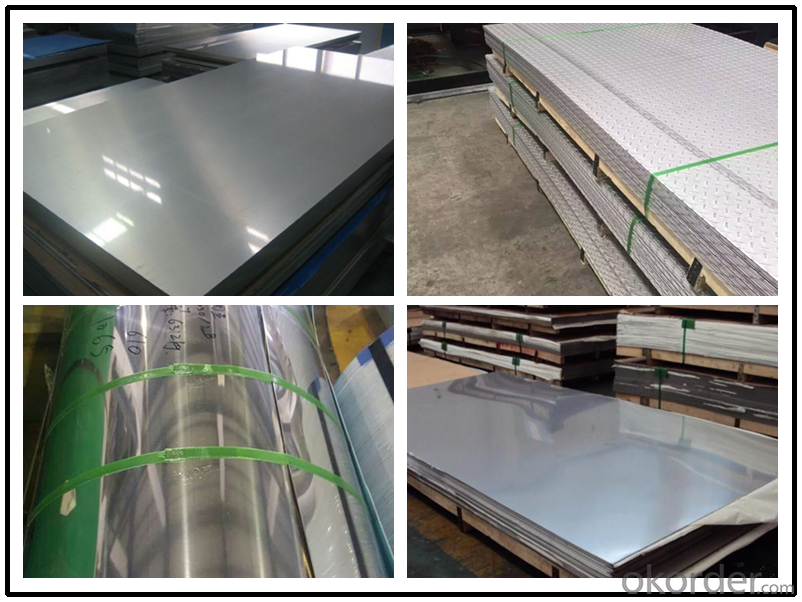
Packaging & Shipping
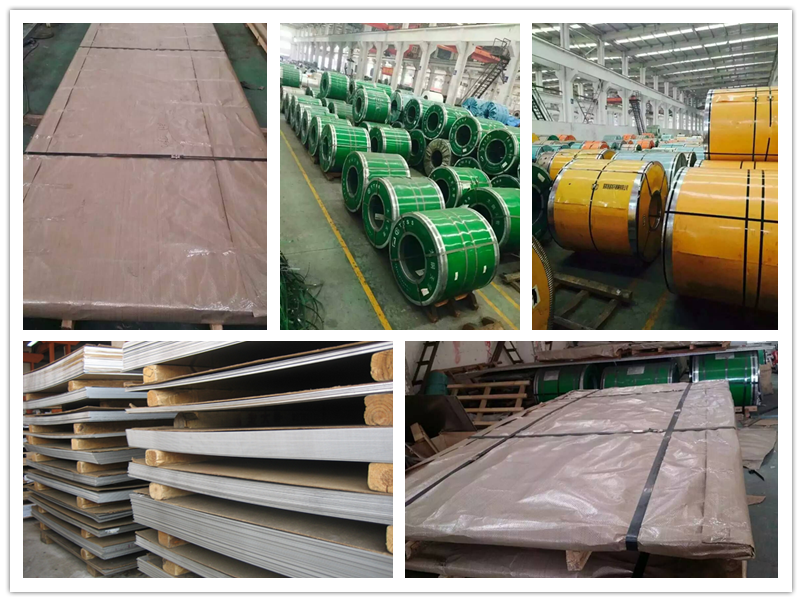
Application
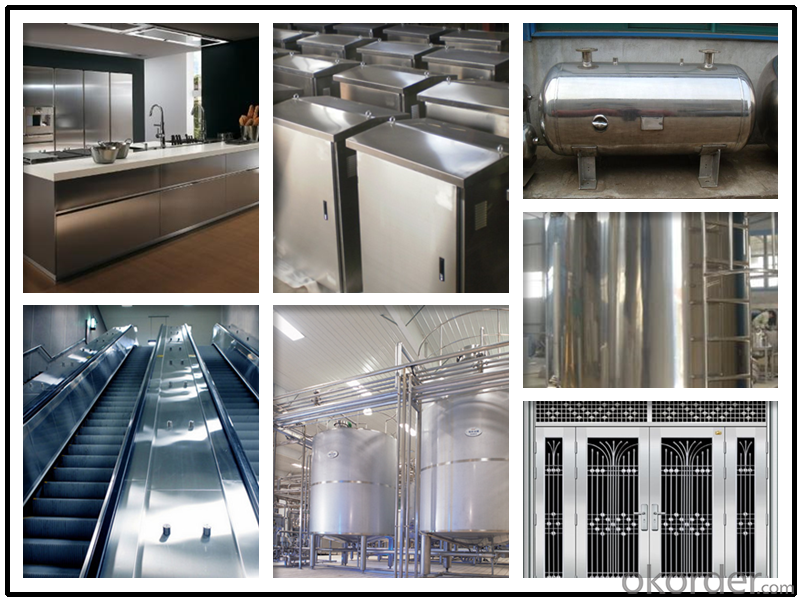
- Q: Can stainless steel sheets be used for decorative elevator doors or panels?
- Indeed, stainless steel sheets are perfectly suitable for adorning elevator doors or panels in a decorative manner. The versatility of stainless steel as a material is unparalleled, as it not only bestows an exquisite and contemporary appearance but also enjoys great popularity for its decorative applications. Its exceptional durability, resistance to corrosion, and effortless maintenance make it an ideal choice for areas with heavy foot traffic, such as elevator doors and panels. Moreover, stainless steel sheets can be tailored to one's specific preferences by incorporating a wide range of finishes, patterns, and textures, thereby offering limitless design possibilities. Whether one desires a sleek and minimalist aesthetic or a more intricate and decorative motif, stainless steel sheets can elevate the visual appeal of elevator doors and panels while providing enduring functionality.
- Q: What does "80 wire" stainless steel plate mean? How much more expensive than the average stainless steel plate?
- 80 silk is 0.8MM thick stainless steel plate, the price is almost the same
- Q: Are stainless steel sheets suitable for wastewater treatment plants?
- Yes, stainless steel sheets are highly suitable for wastewater treatment plants. Stainless steel is known for its corrosion resistance, durability, and ability to withstand harsh and corrosive environments, making it an ideal material for such applications. It can effectively handle the challenges posed by wastewater treatment plants, including exposure to chemicals, moisture, and high temperatures, while maintaining its structural integrity and preventing contamination.
- Q: What is the price range of stainless steel sheets?
- The price of stainless steel sheets can fluctuate due to a variety of factors, including the grade, sheet thickness, size, and any additional finishes or coatings. Typically, the price range for stainless steel sheets begins at approximately $20 per sheet for smaller sizes and standard grades. However, for larger sizes, higher grades, and specialized finishes, the price can escalate to several hundred dollars per sheet. It is worth mentioning that prices can also differ depending on the supplier and market conditions. Therefore, it is advisable to compare prices from multiple sources in order to secure the most favorable deal.
- Q: Can stainless steel sheets be used for solar panel frames?
- Solar panel frames can indeed be made from stainless steel sheets. The use of stainless steel is quite popular for solar panel frames because of its exceptional strength, durability, and resistance to corrosion. It can endure various weather conditions, such as extreme heat, humidity, and exposure to sunlight. In addition, stainless steel is both non-magnetic and non-combustible, ensuring the safety of solar panel installations. Moreover, its high strength-to-weight ratio permits lighter frame designs, reducing the overall weight of the solar panels and facilitating their installation. All in all, stainless steel sheets are a dependable and enduring choice for constructing solar panel frames.
- Q: What is the electrical resistivity of stainless steel sheets?
- The electrical resistivity of stainless steel sheets varies depending on the specific grade or alloy composition of the stainless steel. Generally, stainless steel has a relatively low electrical resistivity compared to other materials, such as copper or aluminum. The resistivity can range from approximately 6.9 x 10^-7 ohm-meters (Ωm) for austenitic stainless steel to 7.2 x 10^-7 Ωm for ferritic stainless steel. It is important to note that these values are approximate and can vary slightly based on factors such as temperature and impurities in the stainless steel.
- Q: Can stainless steel sheets be used for architectural façades?
- Architectural façades can indeed incorporate stainless steel sheets. With their durability and versatility, stainless steel proves to be an advantageous material for such applications. Its resistance to corrosion, weathering, and staining makes it perfect for outdoor use. Moreover, stainless steel sheets can be manipulated into various shapes and sizes, allowing for a wide array of design possibilities. Furthermore, stainless steel can be finished in diverse ways, including brushing, polishing, or coloring, which adds further aesthetic options. Its strength and rigidity also make it suitable for large installations. All in all, stainless steel sheets offer durability, aesthetic appeal, and design flexibility, making them a highly sought-after choice for architectural façades.
- Q: Comparison of three properties of aluminium plate, stainless steel plate and cold rolled plate?
- Aluminum sheet material is light, easy to shape, good coloring;
- Q: Can stainless steel sheets be used for signage or lettering?
- Yes, stainless steel sheets can be used for signage or lettering. Stainless steel is a durable and versatile material that is resistant to corrosion, making it suitable for outdoor applications. It can be cut into various shapes and sizes, allowing for customized signage and lettering designs. Additionally, stainless steel can be finished in different ways, such as brushed or polished, to achieve the desired aesthetic.
- Q: Stainless steel wire drawing without fingerprints, what principle?
- Therefore, the method of stainless steel fingerprint resistance is to make the specular surface of stainless steel into diffuse surface.The conventional method mainly has two kinds of drawing and sand blastingWire drawing is to use (coarse grit) abrasive belt or grinding wheel to burnish on stainless steel surface, make stainless steel surface roughness increase, destroy its "mirror reflection" characteristic. It can be polished by hand (hand grinding can be applied to stainless steel of various shapes). It can also be polished with a special stainless steel sanding machine (suitable for stainless steel plates, but with high efficiency).
Send your message to us
Stainless Steel Sheets 304 316 304l 316l 310 321
- Loading Port:
- Shanghai
- Payment Terms:
- TT OR LC
- Min Order Qty:
- 2 m.t.
- Supply Capability:
- 2000 m.t./month
OKorder Service Pledge
OKorder Financial Service
Similar products
Hot products
Hot Searches
Related keywords
